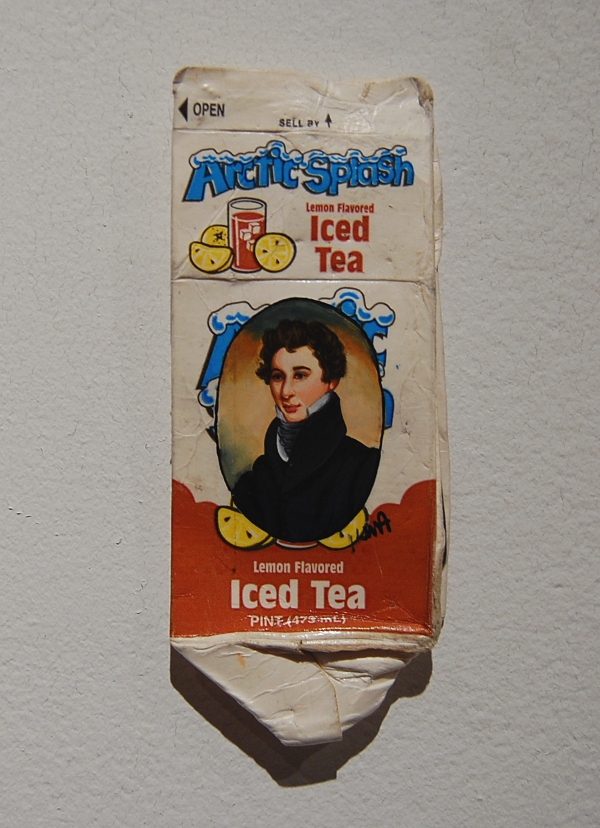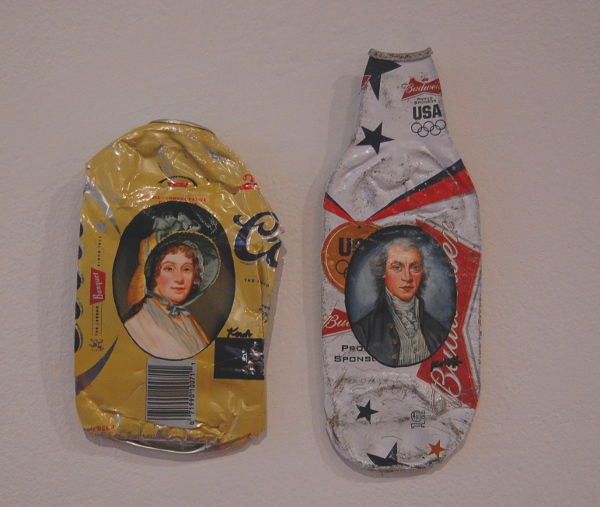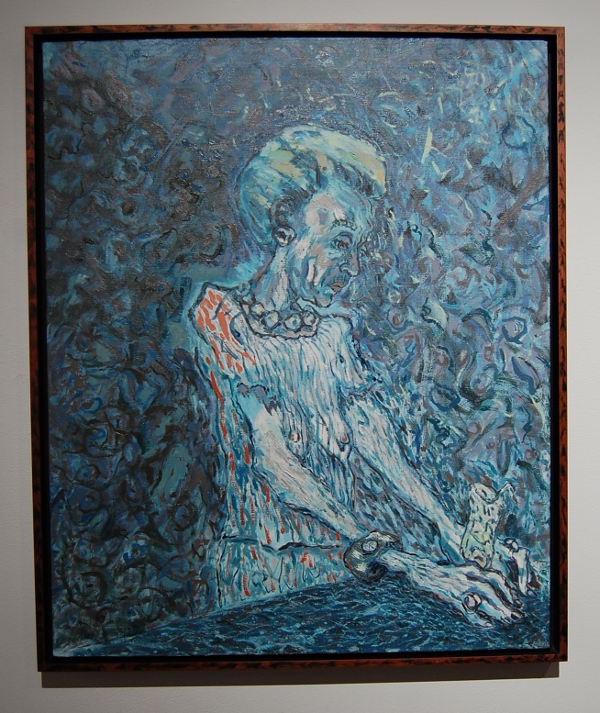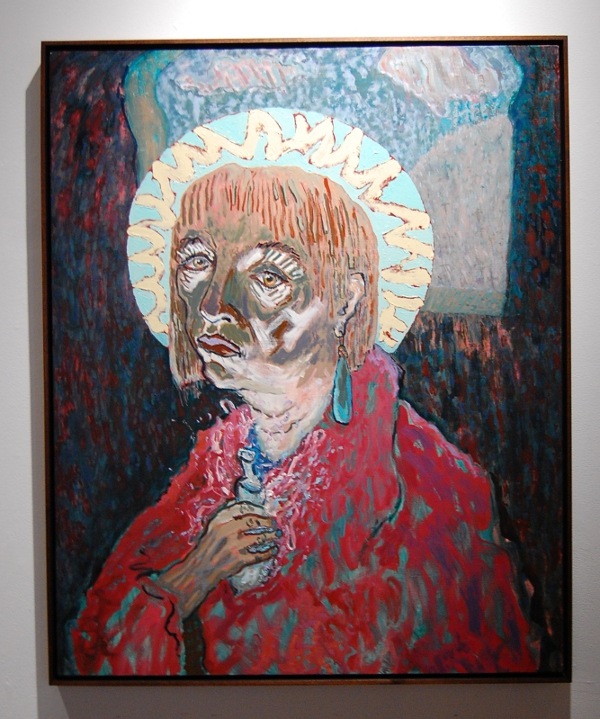
Kim Alsbrooks and Helen Mirkil at Painted Bride
Two artists in the Painted Bride Art Center line the café gallery’s walls with paintings that examine self, family, art history and contemporary society. Artists Kim Alsbrooks and Helen Mirkil join together with InLiquid to demonstrate their portraiture skills in “Portraying Kinship.”
While thematically the two artists reside in a similar vein, their styles and approaches to figurative images couldn’t be much more different. Alsbrooks provides a series of tiny classical portraits painted onto commonly found pieces of litter for her aptly named series “My White Trash Family.” With the title of her show scrawled in pencil on the wall next to her first piece, one would expect a truly trashy display of artwork – but this is only a half truth.
Kim Alsbrooks, “Henrietta Marchant Liston” and “Col. Richard Thomas.”
Each piece of garbage, while itself disgusting and somewhat dismissible (iced tea cartons, smashed beer cans and other discarded drinking containers) is emblazoned with a crisp depiction from art history. The first figure to greet visitors near the entryway is “Henrietta Marchant Liston,” a painting originally by Gilbert Stuart, who of course also produced one of the most famous images of the Unites States’ first President, George Washington. Ms. Liston, however, now finds her home on a flattened can of Coors. At the time of the original work, sitting for a painting was generally a privilege of the upper classes, while now copying images is done as easily as Google-searching and pressing print or snapping a photo.
Alsbrooks doesn’t merely computer generate her reproductions though, opting instead to paint them by hand. The subjects of the original paintings would never have had a way to know any other option than Alsbrooks’s approach, so unlike the consumer refuse she uses as her canvases, the works are quite genuine. These pieces do act somewhat as a criticism of class; none of these affluent people were ‘white trash,’ in fact quite the contrary, but they are notably all white. Alsbrooks seems to question contemporary privilege but also calls to mind our often wasteful and superfluous culture – whether celebrity gossip or literal landfill fodder.
Helen Mirkil, “Deliver my Life from the Sword/The Absent Drinker” (after paintings of The Absinthe Drinker, nineteenth century France).
Mirkil takes a short trip forward through the artistic timeline to focus on the impressionist and post-impressionist eras. Her ghastly rendition of the common nineteenth century French subject of the ‘absinthe drinker’ seems as if the original imbiber had continued putting back liquor for the past hundred plus years. In “Deliver my Life from the Sword/The Absent Drinker”, the woman’s arms are withered and frail and the background is swirling and wavy as if in the midst of a drunken stupor.
Helen Mirkil, “Self-Portrait with Straw Hat” (after “Self-Portrait with Straw Hat” by Van Gogh).
The artist’s “Self-Portrait with Straw Hat” takes its name directly from a painting by Vincent Van Gogh, with a gender-bending twist. Instead of the red-bearded Dutch artist, Mirkil inserts herself and emulates Van Gogh’s style well, with blotches of baby blue, pink and lavender accentuating her facial features.
Helen Mirkil, “Mary’s Extravagant Gift” (after “Portrait of a Young Woman” by Vermeer).
Her nod to Vermeer’s “Portrait of a Young Woman,” entitled “Mary’s Extravagant Gift,” is much less recognizable. Instead of the cherub-faced girl in the original, the artist inserts what is most likely herself again, clutching a mysterious bottle. Not only would it be difficult to pinpoint the artwork it is based on, but even the object in her hand is an enigma beneath her brightly lit, highly contrasted face. In all of its mystery, it is one of the most intriguing pieces in the show.
Painted Bride will have “Portraying Kinship” on view through March 17.
Painted Bride Art Center is located at 230 Vine Street, Philadelphia; [email protected]; paintedbride.org.
Recent Content
-
Artsarticle ·
-
Artsarticle ·
-
Artsarticle ·




